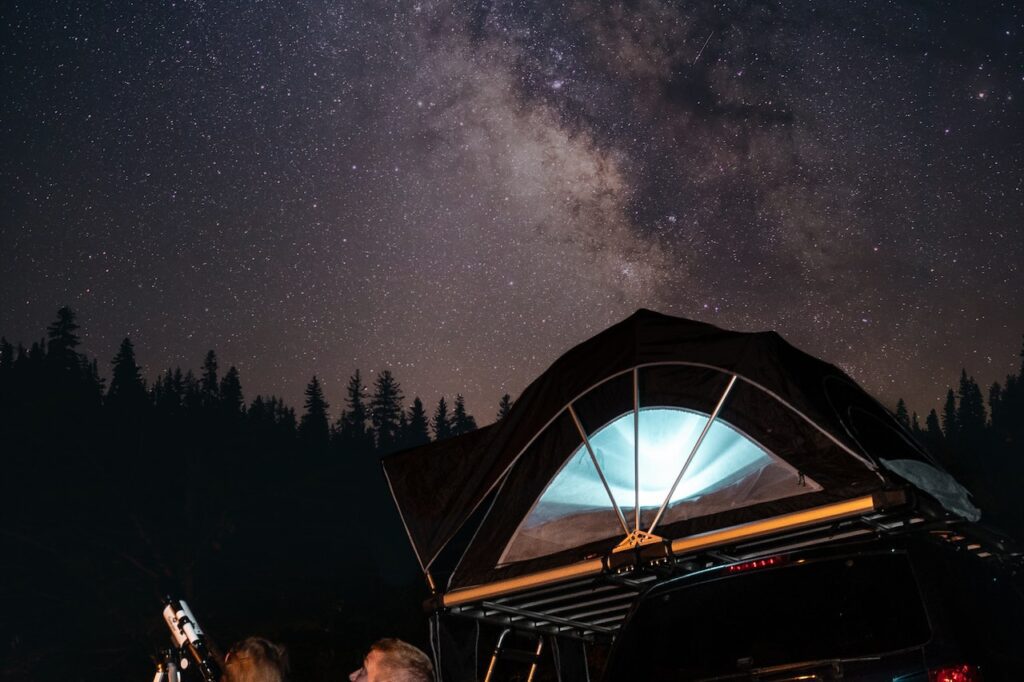Gazing at the night sky can be quite a wonder, especially for curious kids. I mean, who hasn’t dreamt of reaching for the stars, only to be captivated by their twinkling allure? Do you ever wonder what stories these stars hold? Well, strap in, star-lover! This journey will take you from your backyard to the outer realms of the Milky Way.
A Starry Introduction
The night sky is much like an immense dark canvas splattered with countless dots of light. But have you ever considered that these aren’t just dots? They are stars, planets, and galaxies, each with their own tale.
- Fact Check! There are about 100 billion stars in the Milky Way alone. Mind-boggling, right?
Dive into Constellations
You’ve heard of Orion, Ursa Major, and the Big Dipper, haven’t you? These are not just names of random stars but constellations – patterns formed by stars. Here’s the scoop:
- Orion the Hunter: Easily identifiable by three bright stars in a line. Remember the hunter’s belt?
- Ursa Major: It’s like a big pot in the sky, commonly called the Big Dipper.
Why the names, you ask? Well, would you believe it if I told you that our ancestors were storytellers of the sky? They created legends based on these patterns, which were then passed down through generations.
The Zodiac Connection
Now, hands up if you’ve heard of zodiac signs! These are directly linked to constellations. Twelve of them form an imaginary circle around Earth, called the ecliptic. As the Earth moves around the sun, different zodiac constellations appear behind it.
- For instance, born in late July? You’re a Leo, represented by the lion constellation.
Catching Shooting Stars and Meteors
Ever made a wish on a shooting star? These aren’t stars at all! They’re meteors – small rocks from space that burn up as they enter the Earth’s atmosphere. And when we see them, they are literally “burning wishes.”
The Magic of Moon Phases
The moon is our night-time companion, showing up in different shapes, which we call phases. From crescent to full, each phase has its beauty.
- New Moon: Moon’s unlit side faces Earth.
- Full Moon: We see the moon’s entire illuminated face.
Spotting Planets with Naked Eyes
On some nights, you might spot a very bright ‘star’ that doesn’t twinkle. Guess what? That’s a planet! Venus and Jupiter are usually the brightest.
- Pro Tip: Planets move across the sky, while stars remain in the same relative position. So, the next time you see a non-twinkling bright spot, give it a second glance!
Northern and Southern Lights – A Celestial Dance
The Aurora Borealis and Aurora Australis, or as we often fondly call them – the Northern and Southern Lights. They’re nature’s disco lights, caused by collisions between electrically charged particles from the sun and Earth’s atmosphere.
- Did you know? The color variations depend on the type of gas particles involved.
Essential Tools for Star Gazing
- Telescope: Offers a closer look at distant stars and galaxies.
- Star Maps: Helps identify constellations.
- Apps: Mobile apps like Star Walk or SkyView can point out constellations just by holding up your phone!
Encourage the Little Astronomers
If you’re blessed with kids, nieces, nephews, or young friends, encourage their wonder. Set up star-gazing nights, visit planetariums, or simply lay back on a clear evening and let their imaginations take flight.
Key Takeaways
- The night sky is a treasure trove of wonders.
- Constellations are patterns, brimming with legends.
- Shooting stars are actually meteors.
- With the right tools and enthusiasm, the universe is literally at our fingertips.
In essence, our universe is vast and filled with wonders. Each night presents a new chapter of this cosmic tale, waiting to be explored. So, the next time you look up, remember: the stars aren’t just shining; they’re sharing stories. Why not take a moment to listen?







